Class B CDL: Your Ultimate 2025 Guide
Understanding Your Path to a Class B Commercial Driver’s License
A class b cdl is a commercial driver’s license for operating single vehicles with a gross vehicle weight rating (GVWR) of 26,001 pounds or more, and towing trailers under 10,000 pounds. This license opens doors to careers driving straight trucks, buses, dump trucks, and delivery vehicles—typically on local routes that get you home every night.
Quick Overview: What You Can Drive with a Class B CDL
- Straight trucks (delivery trucks, box trucks)
- Large buses (city buses, school buses, tour buses)
- Dump trucks with small trailers
- Garbage trucks and cement mixers
- Small tank trucks and tow trucks
Key Requirements at a Glance:
| Requirement | Details |
|---|---|
| Minimum Age | 18 for intrastate, 21 for interstate |
| Vehicle Weight | 26,001+ lbs GVWR (single vehicle) |
| Trailer Limit | Under 10,000 lbs GVWR |
| Medical Certificate | DOT physical required |
| Testing | Written exam + road skills test |
Understanding the different license classes is key to starting your career. A Class B CDL is perfect if you want to drive larger commercial vehicles locally without dealing with tractor-trailer combinations. It’s often the fastest path into the trucking industry, with training programs completing in as little as four weeks.
The Federal Motor Carrier Safety Administration (FMCSA) oversees CDL requirements to ensure all commercial drivers meet minimum safety standards. The Class B license sits between Class A (the heaviest combination vehicles) and Class C (smaller passenger or hazmat vehicles). It’s designed for drivers who want stable, local work operating substantial commercial vehicles without the complexity of articulated truck-trailer combinations.
Whether you’re looking for a career change or a stable job that gets you home daily, understanding the Class B CDL is your first step.
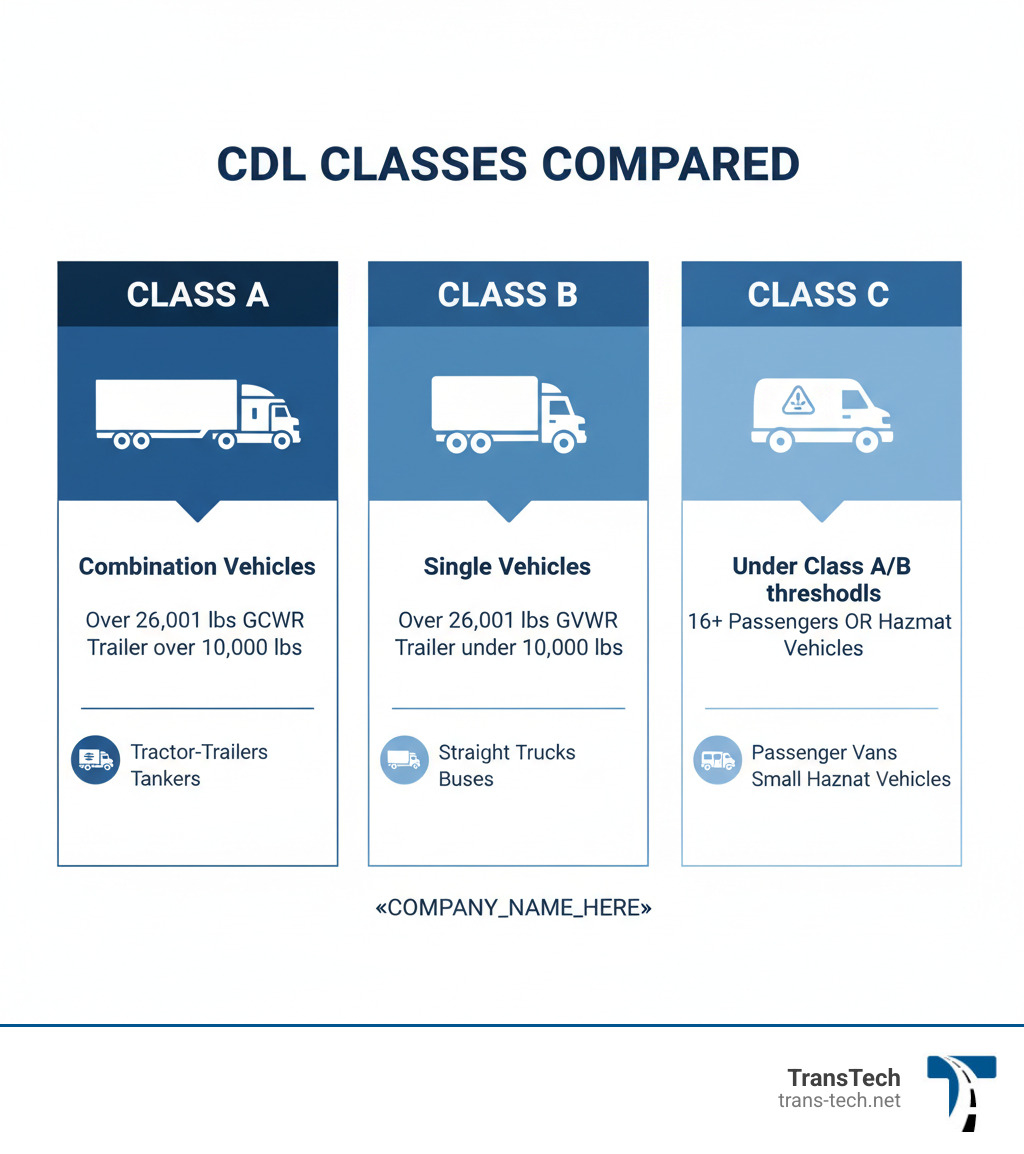
Defining the Class B CDL: Weight, Vehicles, and Capabilities
A class b cdl qualifies you to operate a single commercial vehicle with a Gross Vehicle Weight Rating (GVWR) of 26,001 pounds or more. GVWR is the maximum safe weight of the vehicle when fully loaded. As these are single-unit trucks, you can tow a trailer, but it must weigh less than 10,000 pounds GVWR. This weight distinction is the primary difference between a Class B and a Class A license.
In practical terms, a Class B license lets you drive the workhorses of your community. Examples include:
- Straight trucks (box trucks for delivery and moving)
- Large buses (city, school, and tour buses)
- Dump trucks, garbage trucks, and cement mixers
- Utility repair trucks and other single-unit commercial vehicles
This license opens doors to essential roles in transportation, construction, and public service. For a deeper exploration of what this license covers, see our detailed guide: What is a Class B Commercial Driver’s License?.
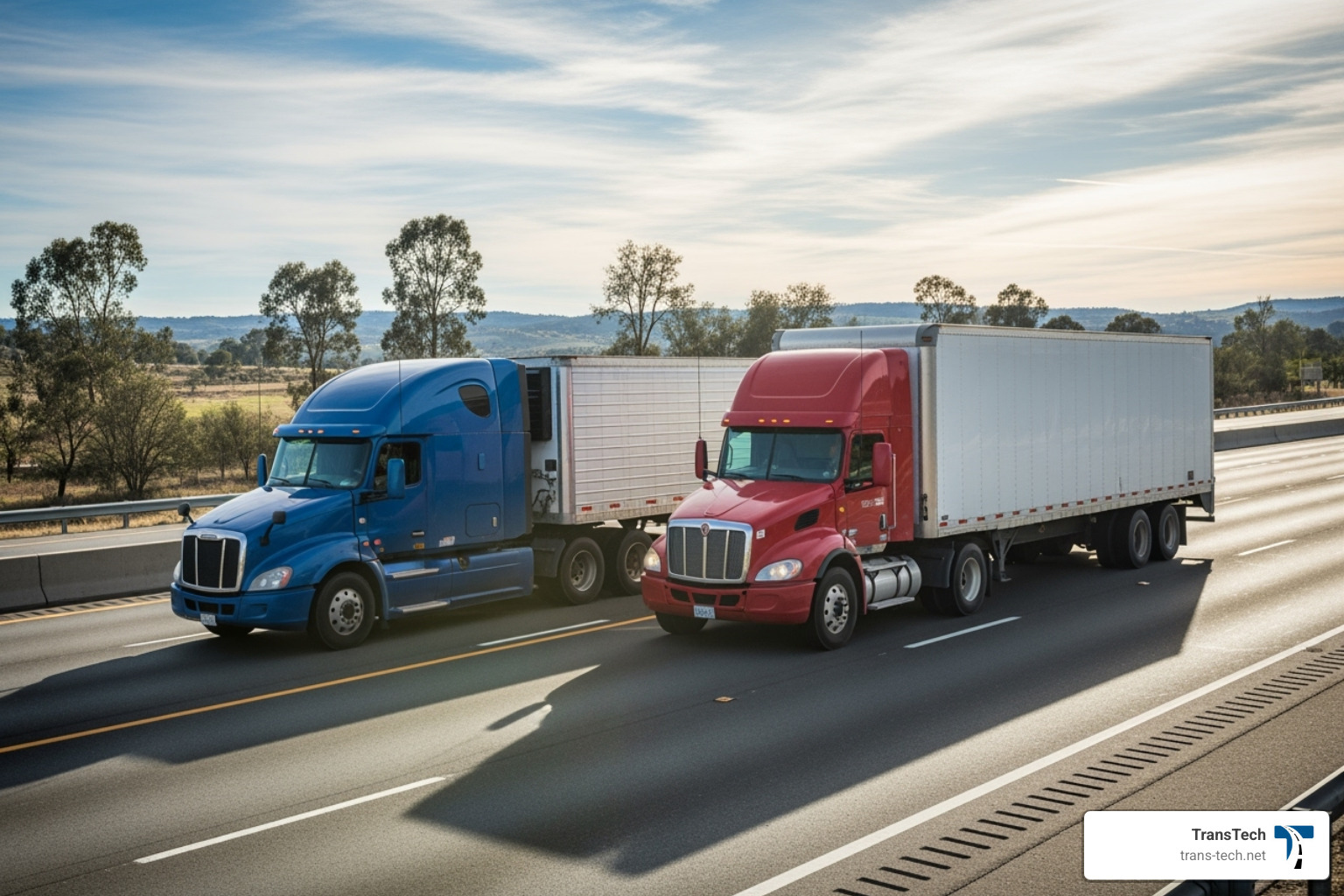
Class B vs. Class A CDL: Making the Right Choice
Choosing between a Class A and a class b cdl is a key decision that shapes your career, lifestyle, and daily routine.
| Feature | Class A CDL | Class B CDL |
|---|---|---|
| Vehicle Type | Combination vehicles (tractor-trailers, tanker trucks, flatbeds, livestock carriers) | Single vehicles (straight trucks, buses, dump trucks, garbage trucks, cement mixers) |
| Earning Potential | Generally higher; more opportunities for specialized and long-haul routes | Stable income; good local pay; growth potential with endorsements and specialized skills |
| Job Type | Primarily long-haul, regional, or over-the-road (OTR); more time away from home | Local delivery, public transit, construction, municipal services; typically home daily |
| Training Intensity | More comprehensive; longer training period; complex maneuvers with articulated vehicles | Shorter training duration; focused on single-vehicle operation; less complex than Class A |
A Class A CDL is the most versatile license, offering the widest range of jobs and higher earning potential, but it often requires long-haul driving and significant time away from home.
This is where a class b cdl shines, especially if you value being home every night. Most Class B jobs are local, providing a predictable schedule that is invaluable for drivers with families or other commitments. Federal regulations also allow 18-year-olds to obtain a CDL for intrastate (in-state) driving, making Class B an excellent entry point for younger drivers.
Training for a Class B is generally shorter and less intensive than for a Class A, as it focuses on single-vehicle operation. This means you can complete your training and start working sooner—often in as little as four weeks. While Class A may offer higher top-end earnings, a class b cdl provides a solid, stable income with lifestyle benefits many drivers prioritize. To dive deeper into how these licenses compare, check out: Class A vs Class B CDL Training.
Vehicle and Career Opportunities with a class b cdl
One of the best things about earning your class b cdl is the variety of career paths it opens, many with a “home daily” schedule. This work-life balance is a major draw for drivers who want to maintain a normal life outside of work.
Dump truck drivers are essential for construction sites, while bus drivers play vital roles in public transit, school transportation, and tourism. According to the Bureau of Labor Statistics, job prospects for bus drivers are expected to remain good.
Delivery drivers in large straight trucks keep commerce flowing by handling items too large for standard vans. Garbage truck operators and cement mixer drivers provide essential municipal and construction services, often with set routes and predictable hours. Other opportunities include utility vehicle operators, snow plow operators, and local fuel delivery drivers.
The employment outlook for class b cdl holders is strong, representing real job security in your community. Unlike long-haul trucking, most of these positions are built around daily routes, allowing you to head home at the end of your shift. Our dedicated Job Placement services connect graduates with employers throughout Georgia, North Carolina, and South Carolina who are hiring skilled class b cdl drivers.
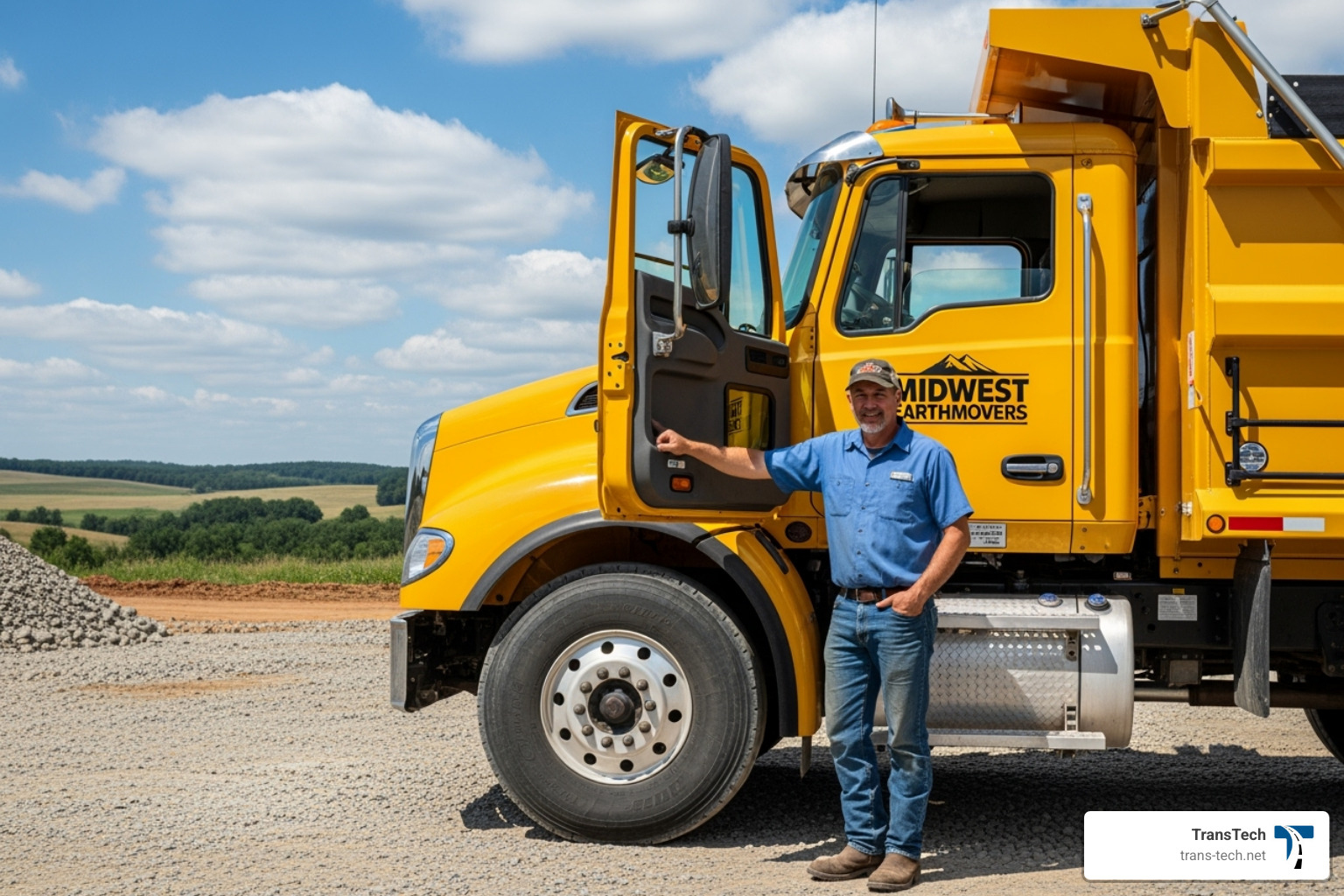
Your Guide to Getting a Class B CDL
Getting a class b cdl involves a straightforward, multi-step process designed to ensure you are prepared to safely operate commercial vehicles. While the FMCSA sets baseline requirements, your state’s DMV administers the licensing, so always check for local details.
Here is the general path to earning your license:
-
Meet Eligibility Requirements: You must be at least 18 years old for intrastate (in-state) driving or 21 for interstate (across state lines) commerce. You’ll also need a valid regular driver’s license and a clean driving record.
-
Obtain a DOT Medical Certificate: You must pass a physical exam with a certified medical examiner to prove you are physically capable of operating a large commercial vehicle. The exam checks vision, hearing, blood pressure, and overall health.
-
Get Your Commercial Learner’s Permit (CLP): This requires passing a written knowledge test at your local DMV covering general commercial driving principles, air brakes, and vehicle operation. With a CLP, you can practice driving on public roads with a qualified CDL holder.
-
Complete Entry-Level Driver Training (ELDT): As of February 7, 2022, federal law requires all new CDL applicants to complete ELDT from a provider on the FMCSA’s Training Provider Registry. This includes both classroom theory and behind-the-wheel training.
-
Pass the CDL Skills Test: This is the final, hands-on exam, which includes a pre-trip inspection, basic vehicle controls, and an on-road driving test.
Each step is designed to build your confidence and ensure you are a safe, prepared driver. For a comprehensive look at the process, see our guide: How to Get a CDL.
Training and Testing for Your class b cdl
Quality training is the difference between just getting a license and being truly prepared for a career. The federal Entry-Level Driver Training (ELDT) mandate ensures every new driver receives standardized instruction in both classroom theory and behind-the-wheel practice. You can learn more about these federal requirements here: Information on ELDT requirements.
At TransTech, our class b cdl programs are designed to exceed ELDT standards and prepare you for success. We offer flexible 4-week full-time or 10-week part-time programs at our modern facilities across Georgia, North Carolina, and South Carolina. Small class sizes ensure you get personalized attention from experienced instructors.
After training, you’ll take the CDL skills test, which has three parts:
- Pre-Trip Inspection: You will walk around the vehicle and demonstrate that you can identify key components and check that they are safe to operate.
- Basic Controls Test: In a controlled lot, you will perform maneuvers like straight-line backing, offset backing, and parallel parking to prove you can handle the vehicle with precision.
- Road Skills Test: You will drive the commercial vehicle on public roads, navigating traffic, intersections, and turns to demonstrate safe, professional driving practices.
Our programs thoroughly prepare you for each segment of the test. We also offer 3rd Party testing at our facilities, allowing you to test in a familiar environment. For more details, visit our CDL Testing page or learn about our Class B CDL Training options.
Key Endorsements and Regulations
Endorsements are specialized qualifications that expand what you can drive with your class b cdl, making you more valuable to employers.
- The Passenger (P) endorsement is required to drive vehicles designed for 16 or more passengers, such as city or tour buses. It requires a written knowledge test and may require a skills test.
- The School Bus (S) endorsement, needed in addition to the P endorsement to drive school buses, requires a specialized written test and a background check.
- The Hazardous Materials (H) endorsement is for transporting materials that require placards. It requires a written test and a TSA background check.
Obtaining the P, S, or H endorsements requires completing a separate ELDT course for each.
It’s also important to understand the difference between intrastate and interstate commerce. Intrastate driving is confined to one state, and you can get your CDL at age 18. Interstate commerce involves crossing state lines, which requires you to be at least 21. Always check with your state’s DMV for specific local requirements.
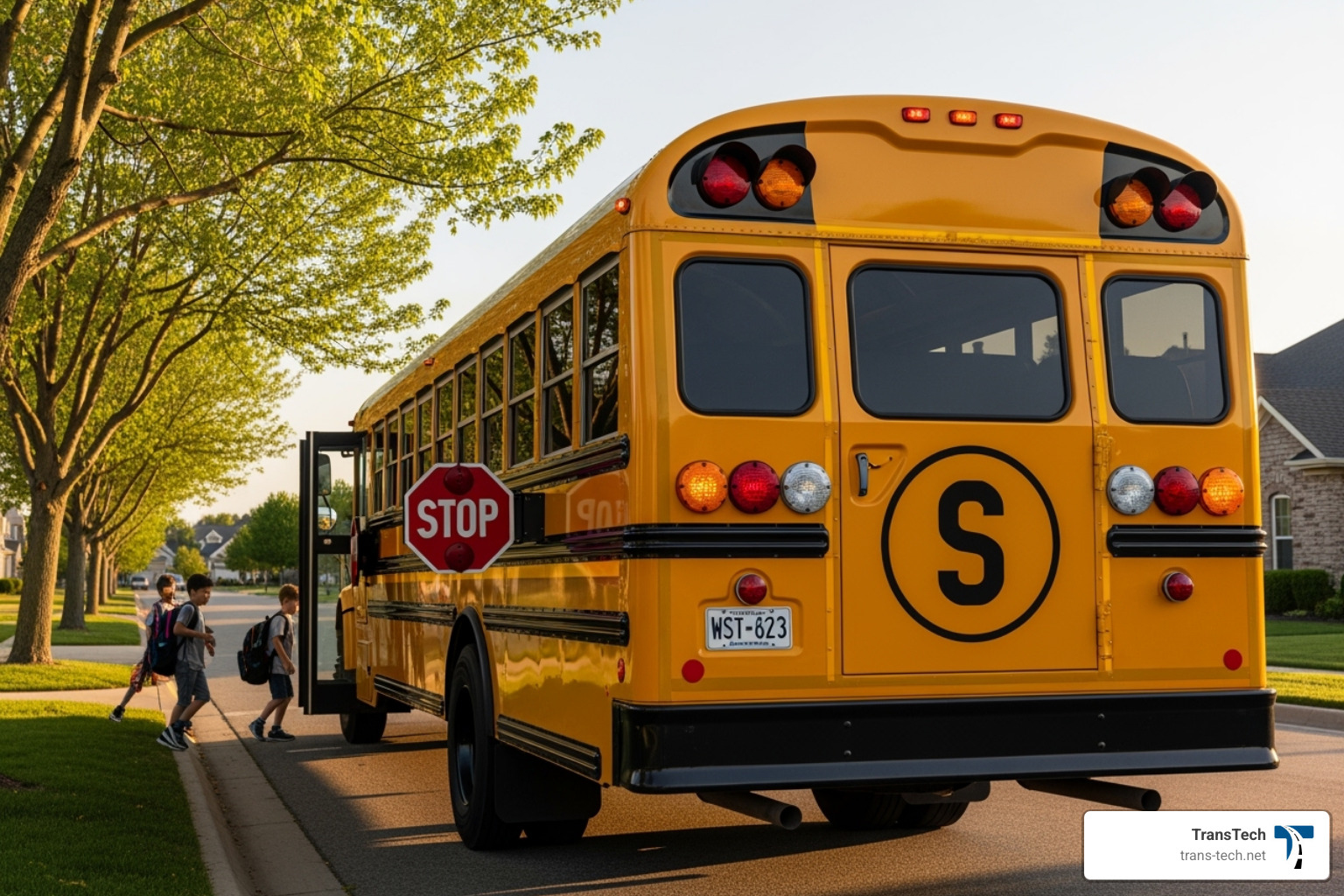
Frequently Asked Questions about the Class B License
Here are answers to some of the most common questions about getting a class b cdl.
Can a Class B CDL holder operate Class C vehicles?
Yes. A class b cdl automatically authorizes you to operate any vehicle that falls under Class C requirements. A Class C CDL is for vehicles that don’t meet Class A or B weight thresholds but are designed to transport 16+ passengers or carry placarded hazardous materials.
However, you still need the appropriate endorsements. To transport passengers, you need the Passenger (P) endorsement, and to haul hazmat, you need the HazMat (H) endorsement. Your Class B license is the foundation; endorsements add the special permissions.
What is the main advantage of a Class B CDL over a Class A?
The primary advantage of a class b cdl is the lifestyle it affords. Most Class B jobs are local, meaning you are home every night. This provides an excellent work-life balance that is difficult to achieve with long-haul Class A jobs.
Other advantages include:
- Faster, less expensive training: Class B programs are typically shorter and more affordable than Class A programs.
- Quicker entry into the industry: You can be trained and licensed in as little as four weeks.
- Earlier career start: Drivers can get a Class B CDL for in-state driving at age 18, three years before they are eligible for interstate commerce.
How does earning potential compare for Class B vs. Class A drivers?
On average, Class A drivers tend to earn more due to the nature of long-haul routes and specialized freight. However, a class b cdl offers a stable, competitive income with predictable hours and the significant financial benefit of being home daily, which reduces on-the-road expenses.
Many class b cdl drivers receive hourly wages or salaries with opportunities for overtime. Your earning potential increases with experience and endorsements (like Passenger or HazMat), and certain specialized jobs, such as cement mixer operator, command higher pay.
The bottom line is that while Class A may have a higher earning ceiling, a class b cdl provides excellent income with a more sustainable lifestyle. Our Job Placement services help graduates find opportunities that match their qualifications and life goals.
Conclusion
You now have a clear picture of what a class b cdl can do for your future. It’s your ticket to a stable career with the flexibility to maintain a healthy work-life balance.
With a class b cdl, you can pursue a variety of local driving careers—from operating a city bus or dump truck to driving a delivery vehicle. These are meaningful jobs that allow you to be an essential part of your community and still come home every night.
At TransTech, we provide the superior training you need to start a successful career. Our class b cdl programs build the confidence and skills required for the road ahead. With modern facilities across Georgia, North Carolina, and South Carolina, flexible schedules, and small class sizes, we are committed to your success.
You can graduate with the skills and certification needed to start earning in as little as four weeks. We even offer 3rd Party testing at our facilities to make the process as smooth as possible.
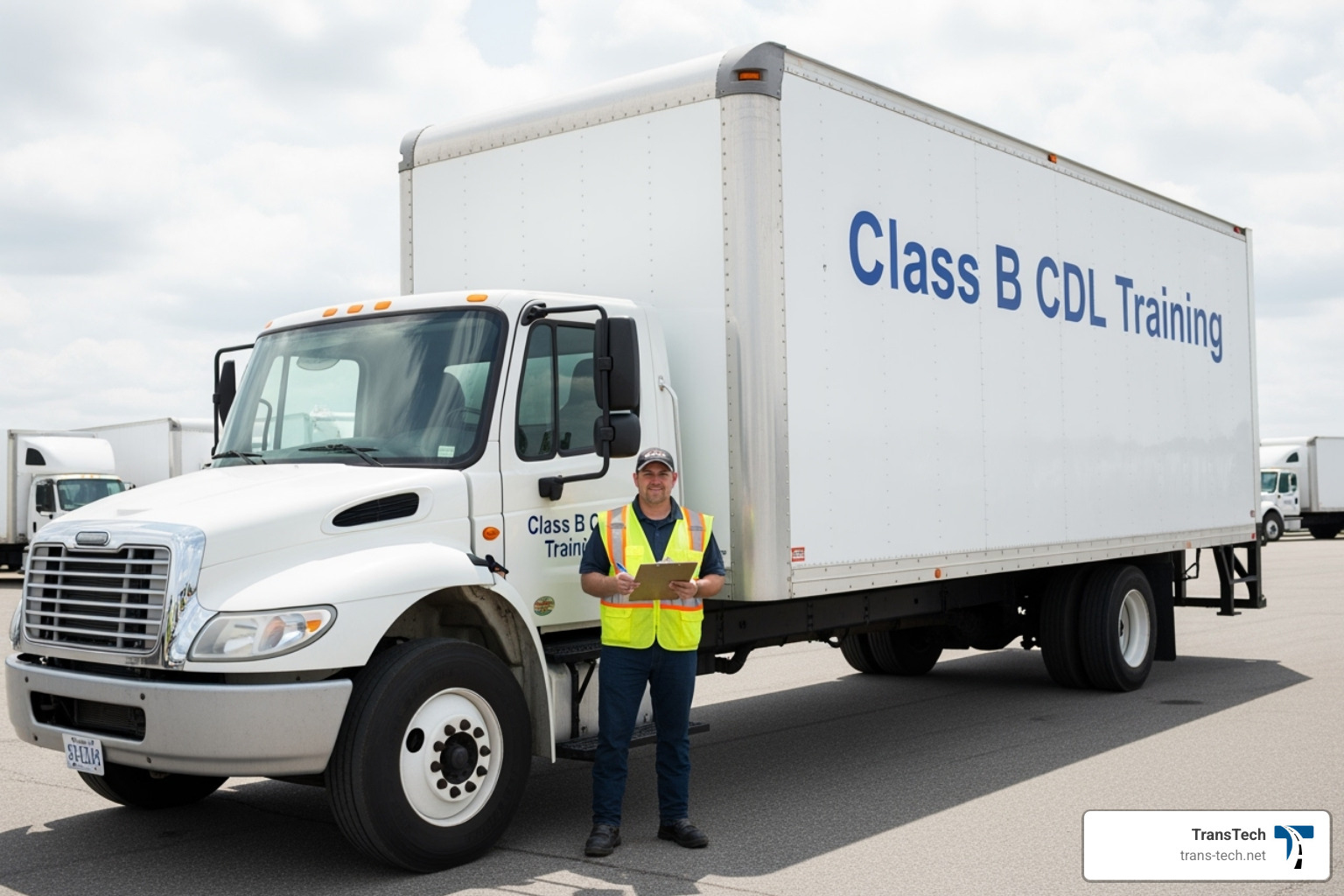
The road ahead is waiting. Take the first step today.